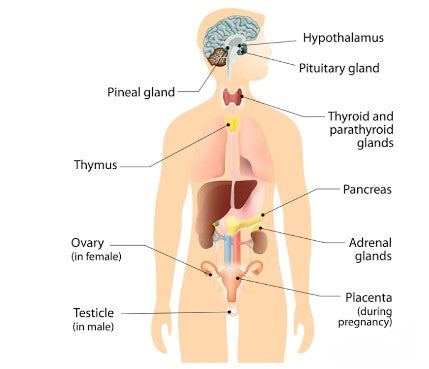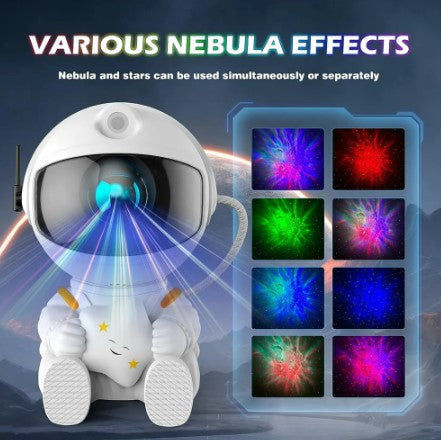Understanding Your Biological Clock: Endogenous Pacemakers and Exogenous Zeitgebers
In the previous sections, we explored the fascinating world of biological rhythms. These rhythms, essential for our well-being, require constant adjustment to stay in sync with the external environment. To accomplish this, we rely on endogenous pacemakers, or our biological clocks, and exogenous zeitgebers, which reset these clocks daily. Let's dive into the workings of these crucial processes in simple terms.
Endogenous Pacemakers: Your Inner Timekeepers
Our bodies have internal mechanisms known as endogenous pacemakers that originate within us. These pacemakers, likely governed by inherited genetic mechanisms, allow us to adapt to changing environmental cycles. The suprachiasmatic nucleus (SCN), residing in the hypothalamus, plays a pivotal role as the most significant pacemaker in human beings.
The Suprachiasmatic Nucleus: Mastering Your Circadian Rhythm
Think of the SCN as the conductor of your body's circadian rhythm orchestra. This tiny cluster of nerve cells acts as the master clock, linking with other brain regions responsible for sleep, arousal, and controlling other biological clocks throughout your body.
The SCN's synchronised neurons transmit coordinated signals to target neurons in various body sites, maintaining a circadian rhythm. However, these peripheral clocks can only sustain this rhythm for a limited time, which is why they rely on the SCN's control.
Resetting the Clock: Light's Influence on the SCN
The SCN's built-in circadian rhythm usually requires resetting only when external light levels change. Even when our eyes are closed, light penetrates our eyelids, allowing the optic nerve to deliver light-level information to the SCN. If our biological clock is running slow, such as when the sun rises earlier than the previous day, morning light automatically adjusts the clock to synchronise with the outside world. The SCN also regulates the production and secretion of melatonin in the pineal gland through a neural pathway.
The Pineal Gland: Melatonin and Sleep Regulation
Working hand in hand, the SCN communicates with the pineal gland, directing it to increase melatonin production and secretion at night, promoting sleep. Melatonin inhibits the brain mechanisms that promote wakefulness. Both the pineal gland and the SCN serve as endogenous pacemakers in the brain. Despite their internal nature, these clocks must synchronize their activity with the light-dark rhythm of the external world.
Exogenous Zeitgebers: The External Time Givers
On the other hand, exogenous zeitgebers refer to environmental events originating outside our bodies that entrain our biological clock. Among these zeitgebers, light plays a crucial role as the most important zeitgeber for most animals.
Light: Resetting Your Internal Clock
Within the SCN, receptors sensitive to light changes during the day synchronise the activity of our organs and glands. Light acts as a daily reset button for our internal biological clock, ensuring it stays on a 24-hour cycle.
While rods and cones in our retinas detect light to form visual images, there is a special type of light-detecting cell called melanopsin-containing cells. These cells gauge overall brightness, aiding in resetting our internal biological clock. Melanopsin, a protein sensitive to natural light, plays a critical role in this process. A small number of these cells carry signals to the SCN, setting the daily rhythm of our body.
Social Cues: An Alternative Zeitgeber
Although natural light is the primary zeitgeber, social stimuli such as mealtimes and social activities can also act as zeitgebers. Studies have shown that individuals can compensate for the absence of natural light by responding to social cues instead. For example, air travelers adjusting to a new time zone may experience quicker adaptation when exposed to the social cues of their destination. It's important to note that while social cues play a role, light exposure remains the primary zeitgeber.
Evaluation of Endogenous Pacemakers: The SCN's Role
To understand the significance of the SCN as an endogenous pacemaker, Morgan's study on hamsters provides valuable insights. By breeding hamsters with abnormal circadian rhythms, Morgan discovered that transplanting SCN neurons from abnormal hamsters to normal ones caused the normal hamsters to adopt the abnormal rhythm. Conversely, transplanting SCN neurons from normal hamsters to abnormal ones resulted in a shift to a 24-hour rhythm. This confirms the pivotal role of the SCN in setting circadian rhythms.
Dangers of Disrupted Rhythms: Artificial Light at Night
Research by Tautou et al. warns about the adverse effects of exposure to artificial light at night. With teenagers spending increasing amounts of time on electronic media, the blue light emitted by their devices disrupts the circadian system. This suppression of melatonin secretion and circadian disruption leads to irregular, shortened, and delayed sleep. Over time, this combination of sleep deprivation and circadian disruption can have detrimental effects on health, such as increased rates of cardiovascular and mood disorders.
Evaluation of Exogenous Zeitgebers: Supporting Melanopsin's Role
Blind individuals, despite lacking functional rods and cones, can still entrain their circadian rhythms in response to light. Studies have shown that blind subjects with some light perception exhibit normally entrained circadian rhythms. This suggests that the pathway from retinal cells containing melanopsin to the SCN remains intact. Conversely, those without light perception display abnormal circadian entrainment, highlighting the importance of melanopsin in setting the biological clock.
Using Light to Avoid Jet Lag
Researchers Burgess et al. discovered that exposure to bright light before an east-west flight can reduce the time needed to readjust to local time upon arrival. Participants in the study underwent different treatments involving exposure to continuous bright light, intermittent bright light, or dim light. The group exposed to continuous bright light experienced the most significant shift in their circadian rhythm, making them sleepier earlier in the evening and wake up earlier in the morning. This suggests that light exposure prior to a flight can partially re-entrain the circadian rhythms to the local time.
The Role of Artificial Light as a Zeitgeber
A study by Vetter et al. emphasized the importance of light in regulating sleep-wake and activity-rest patterns. Participants exposed to normal warm artificial light synchronized their circadian rhythms with the natural light of dawn each day. In contrast, those exposed to blue-enriched light synchronized their rhythms to office hours instead. This confirms that light acts as the dominant zeitgeber for the SCN, with its effectiveness dependent on the spectral composition of light.
Conclusion
Understanding the intricate interplay between endogenous pacemakers and exogenous zeitgebers is crucial for maintaining a healthy circadian rhythm. While our internal biological clock, governed by the SCN, sets the foundation, external factors like light exposure and social cues fine-tune our daily rhythms. However, the modern era's increasing exposure to artificial light poses risks to our circadian system. By being mindful of our light environment and using strategies like light exposure before travel, we can better manage our biological clocks.
Now, it's time to test your knowledge! Take the quiz below to assess your understanding of endogenous pacemakers and exogenous zeitgebers.











